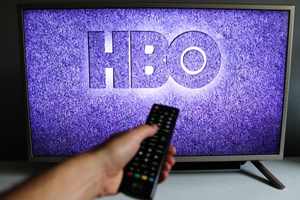 Obsolescence, planned or otherwise, has long been part of the TV experience. When I was a kid in the 1950s, our house had a Philco set with a 21-inch picture tube in a solid oak cabinet. Philco's ads promised: "Nothing can approach it for sensitivity, noise elimination, and picture stability." But it couldn't handle color. So across the room we had an equally large console with a screen that measured only 15 inches. It was RCA's CT-100. We were a two-TV family—but only because technology forced it on us. Obsolescence, planned or otherwise, has long been part of the TV experience. When I was a kid in the 1950s, our house had a Philco set with a 21-inch picture tube in a solid oak cabinet. Philco's ads promised: "Nothing can approach it for sensitivity, noise elimination, and picture stability." But it couldn't handle color. So across the room we had an equally large console with a screen that measured only 15 inches. It was RCA's CT-100. We were a two-TV family—but only because technology forced it on us.
Last December, Netflix customers were informed that because of "technical limitations," the picture would go off if they were watching on certain Samsung or Vizio sets or the earliest Roku boxes. This spring, viewers eager to explore Disney+, NBC's Peacock, HBO Max and other new streaming services learned that their older devices wouldn't support the feeds, and can't be upgraded. The only choice is to buy new equipment.
The Samsung website includes feedback like this from one owner: "It's ridiculous that Samsung TV's don't support Disney+ on their TV's older than four years. . . . Surely Samsung can retro fit the app to their 'older' TVs."
Most of today's smart TV sets are rated for as much as 100,000 hours of viewing, or 55 years at five hours a day. But as soon as the manufacturer stops providing new or updated apps, the set starts to become useless.
Most infuriating to me was discovering that my Apple box won't get—wait for it—the new Apple TV+ streaming service. The website advises that I buy a new box, which comes with a year of Apple TV+, worth $4.99 a month. The new box costs $179—roughly three times the value of the "free" year's subscription.
And the device, like its predecessors, will soon likely become outdated. Samsung TVs sold as recently as 2015 don't work for some services in 2020. New sets range in price from about $500 to more than $2,000. Television sets may grow dumb, the companies that make them are smarter than ever.
(c) Peter Funt. This column originally appeared in The Wall Street Journal.
|
|



 Obsolescence, planned or otherwise, has long been part of the TV experience. When I was a kid in the 1950s, our house had a Philco set with a 21-inch picture tube in a solid oak cabinet. Philco's ads promised: "Nothing can approach it for sensitivity, noise elimination, and picture stability." But it couldn't handle color. So across the room we had an equally large console with a screen that measured only 15 inches. It was RCA's CT-100. We were a two-TV family—but only because technology forced it on us.
Obsolescence, planned or otherwise, has long been part of the TV experience. When I was a kid in the 1950s, our house had a Philco set with a 21-inch picture tube in a solid oak cabinet. Philco's ads promised: "Nothing can approach it for sensitivity, noise elimination, and picture stability." But it couldn't handle color. So across the room we had an equally large console with a screen that measured only 15 inches. It was RCA's CT-100. We were a two-TV family—but only because technology forced it on us.